Recommend a resource for early childhood science and engineering education
By Peggy Ashbrook
Posted on 2014-12-01
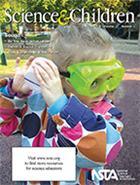 Guidance for effective science and engineering teaching can be found in the NSTA position statement on Early Childhood Science Education. Materials for science and engineering science explorations, such as teacher resource books, can support teachers and administrators in implementing the principles and declarations of the position statement. Many books claim to be that inquiry-based, well-researched, aligned with standards and developmentally appropriate content that you are looking for—but what is the evidence?
Guidance for effective science and engineering teaching can be found in the NSTA position statement on Early Childhood Science Education. Materials for science and engineering science explorations, such as teacher resource books, can support teachers and administrators in implementing the principles and declarations of the position statement. Many books claim to be that inquiry-based, well-researched, aligned with standards and developmentally appropriate content that you are looking for—but what is the evidence?
 The NSTA journal, Science and Children, publishes an occasional column called “Early Childhood Resource Review.” Column editor Ingrid Chalufour selects resources for review from those suggested by readers. The primary criteria for books is how well the author poses practical ways of addressing the NSTA position statement on early childhood science. The reviewers help us understand the value of the resource and how to get the most from it. Two columns recommending tools of inquiry for the classroom will be in the February 2015 and 2016 journals.
The NSTA journal, Science and Children, publishes an occasional column called “Early Childhood Resource Review.” Column editor Ingrid Chalufour selects resources for review from those suggested by readers. The primary criteria for books is how well the author poses practical ways of addressing the NSTA position statement on early childhood science. The reviewers help us understand the value of the resource and how to get the most from it. Two columns recommending tools of inquiry for the classroom will be in the February 2015 and 2016 journals.
Do you have a favorite book or other resource to suggest for consideration? Authors, don’t be shy. See the Science and Children Call for Papers page and scroll down to learn how to submit. Let other early childhood educators benefit from the resources you find most helpful.
 Guidance for effective science and engineering teaching can be found in the NSTA position statement on Early Childhood Science Education. Materials for science and engineering science explorations, such as teacher resou
Guidance for effective science and engineering teaching can be found in the NSTA position statement on Early Childhood Science Education. Materials for science and engineering science explorations, such as teacher resou
#NSTA14 Long Beach: Highlights from the Hall
By Lauren Jonas, NSTA Assistant Executive Director
Posted on 2014-12-01
 The Long Beach NSTA 2014 Area Conference on Science Education starts this week! We’ll be making ourselves at home at the Long Beach Convention Center in sunny California, December 4-6, 2014. In collaboration with the California Science Teachers Association (CSTA), we invite you to join us. Our conference theme is SCIENCE—Catch the Wave! Conference strands will focus on NGSS Implementation, Science: The Gateway to Common Core State Standards, and STEM Classrooms: Anytime/Anyplace/Anywhere.
The Long Beach NSTA 2014 Area Conference on Science Education starts this week! We’ll be making ourselves at home at the Long Beach Convention Center in sunny California, December 4-6, 2014. In collaboration with the California Science Teachers Association (CSTA), we invite you to join us. Our conference theme is SCIENCE—Catch the Wave! Conference strands will focus on NGSS Implementation, Science: The Gateway to Common Core State Standards, and STEM Classrooms: Anytime/Anyplace/Anywhere.
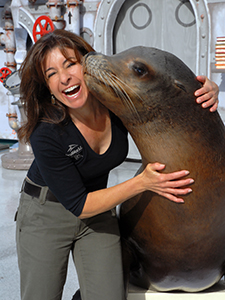 We’ll kick things off on Thursday morning (December 4) with our keynote presentation (The Balancing Act of Environmental Education: Removing the Fear But Keeping Reality) by Julie Scardina at 9:15 am. Using a variety of animal ambassadors, Scardina will demonstrate that it takes a more sophisticated understanding of ecology, biology, and environmental science to save our planet’s biodiversity.
We’ll kick things off on Thursday morning (December 4) with our keynote presentation (The Balancing Act of Environmental Education: Removing the Fear But Keeping Reality) by Julie Scardina at 9:15 am. Using a variety of animal ambassadors, Scardina will demonstrate that it takes a more sophisticated understanding of ecology, biology, and environmental science to save our planet’s biodiversity.
Programming-wise, we’ve hand-selected and vetted more than 500 unique sessions, workshops, and presentations resulting in a diverse range of programming with something for everyone—from classroom teachers to administrators and informal educators at all age levels and interests. You can check out all the sessions online via the Session Browser or view the program (pdf).
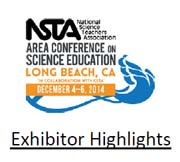 We would also like to recognize and thank our outstanding Exhibitors who have lots of exciting hands-on activities in store for you. We have more than 150 unique exhibits to visit and have put together nine pages of highlighted activities taking place in the Exhibit Hall over the course of the conference. You can also review all of the Exhibitors by taking a spin around the online floor plan, which includes a roster of exhibitors, a description of what they’ll be featuring, and where they’re located in the Exhibit Hall.
We would also like to recognize and thank our outstanding Exhibitors who have lots of exciting hands-on activities in store for you. We have more than 150 unique exhibits to visit and have put together nine pages of highlighted activities taking place in the Exhibit Hall over the course of the conference. You can also review all of the Exhibitors by taking a spin around the online floor plan, which includes a roster of exhibitors, a description of what they’ll be featuring, and where they’re located in the Exhibit Hall.
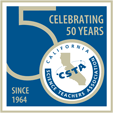 California teachers, be sure to drop by the CSTA booth, located in the Exhibit Hall B of the Convention Center (Booth 326). As the advocate for quality science education in California for more than 50 years, the California Science Teachers Association offers networking, professional development, and representation to assure state policies and legislation support you in inspiring your students. Stop by to meet them, get resources for implementing NGSS, and to join CSTA. They will have tickets available for purchase for the CSTA Night at the Aquarium of the Pacific, Thursday, 7:00–10:00 PM.
California teachers, be sure to drop by the CSTA booth, located in the Exhibit Hall B of the Convention Center (Booth 326). As the advocate for quality science education in California for more than 50 years, the California Science Teachers Association offers networking, professional development, and representation to assure state policies and legislation support you in inspiring your students. Stop by to meet them, get resources for implementing NGSS, and to join CSTA. They will have tickets available for purchase for the CSTA Night at the Aquarium of the Pacific, Thursday, 7:00–10:00 PM.
 For the latest conference information, download the Long Beach Conference App. If you’re not already registered, there is still time to join us and you can register online 24/7. We’re excited to see you this week!
For the latest conference information, download the Long Beach Conference App. If you’re not already registered, there is still time to join us and you can register online 24/7. We’re excited to see you this week!
For questions about the Long Beach exhibits, please contact Jason Sheldrake, Assistant Executive Director, National Science Teachers Association at jsheldrake@nsta.org; or contact Jeffrey LeGrand, NSTA Exhibits and Advertising Associate, at jlegrand@nsta.org.
2015 National Conference on Science Education
The mission of NSTA is to promote excellence and innovation in science teaching and learning for all.
Follow NSTA
| |
|
|
|
 The Long Beach NSTA 2014 Area Conference on Science Education starts this week! We’ll be making ourselves at home at the Long Beach Convention Center in sunny California, December 4-6, 2014.
The Long Beach NSTA 2014 Area Conference on Science Education starts this week! We’ll be making ourselves at home at the Long Beach Convention Center in sunny California, December 4-6, 2014.
NSTA Members – Three Reasons We Are Thankful For YOU!
By Teshia Birts, CAE
Posted on 2014-11-26
As we prepare the turkey and brave the elements (some of us) for those last minute ingredients we forgot, this time of the year we give thanks for family and friends. NSTA is no different – we are very thankful for our members and here are just a few reasons why:

- There’s work to be done and our members help us get things done. Our volunteer leaders are second to none. From our board of directors, council members and standing committees to our advisory boards, task forces and ad hoc workgroups, NSTA may have the hardest working, most engaged members of any professional organization. NSTA would not be the organization is it without the strong foundation we have in our leadership.
- Our members are dedicated. They care about the future of science education and their profession. When it seems as though no one else cares about the content we create or the events and activities we plan, our members continue to be engaged. They are smart and they share that knowledge in our online communities, on listserves and as presenters during our conferences. Whatever it takes to move science education forward, NSTA members go the extra mile to deliver.
- NSTA members really do believe in the mission “…to promote excellence and innovation in science teaching and learning for all.” While it’s true that members join NSTA for different reasons and not all members join to give back to their profession, in the end they renew their membership and continue to do so because of what this organization represents and its value. And that is why we create content-rich, peer-reviewed journals, award-winning publications, five premier science education conferences, web seminars and a host of other products, benefits and services.
NSTA is grateful for our members every day!
On behalf of NSTA, I want to wish everyone a happy and joyous Thanksgiving.
As we prepare the turkey and brave the elements (some of us) for those last minute ingredients we forgot, this time of the year we give thanks for family and friends. NSTA is no different – we are very thankful for our members and here are just a few reasons why:

The Lab Out Loud Podcast for Thanksgiving: Top 12 Science Celebrity Episodes Edition
By Carole Hayward
Posted on 2014-11-25
 As schools across the U.S. take a break this week for the Thanksgiving holiday, NSTA members will find themselves in cars, airplanes, and trains traveling to be with family and friends. Make holiday travel more entertaining, and even edifying, by subscribing to the NSTA-supported Lab Out Loud podcast, which features the best in science education news and commentary.
As schools across the U.S. take a break this week for the Thanksgiving holiday, NSTA members will find themselves in cars, airplanes, and trains traveling to be with family and friends. Make holiday travel more entertaining, and even edifying, by subscribing to the NSTA-supported Lab Out Loud podcast, which features the best in science education news and commentary.
Wisconsin-based podcasting duo Dale Basler and Brian Bartel previously shared their top 12 favorite episodes of their award-winning podcast. For this Thanksgiving special, the hosts offer up a comprehensive list of science celebrities who have visited the podcast, including Kip Thorne, Executive Producer and Feynman Professor of Theoretical Physics, Emeritus, at the California Institute of Technology, who recently discussed the science behind the movie blockbuster Interstellar.
Get inspired with one of these science celebrity episodes:
- Teaching with @Interstellar: Our Conversation with Executive Producer Kip Thorne
- Demos, Resources and Inspiration from Steve Spangler
- Watching The History Inside You With Your Inner Fish (Neil Shubin)
- BBC’s Bang Goes the Theory
- The Sitcom Experiment (Bill Prady from The Big Bang Theory)
- Science We Can Watch (Kari Byron from the Mythbusters)
- Science We Can Listen To (They Might Be Giants)
- Paleontologist Scott from Dinosaur Train
- Mythbuster’s Adam Savage
- Neil deGrasse Tyson on Science Education
- Ed Begley Jr. on Science and the Environment
- Bill Nye Talks About Energy And More
Brian and Dale work hard on each episode, and they have a hard time selecting from the catalog of favorites. But when it comes to favorite holiday foods, it is not quite the same.
“Pecan pie doesn’t need a reason to be someone’s favorite,” said Dale. “When you’re that delicious, no explanation is necessary.”
Brian goes for more of the savory flavors:
“Leftover turkey ranks right up there with leftover pizza,” said Brian. “But being a good boy from Wisconsin, I also can’t turn down cranberries.”
More Time?
Read the Lab Out Loud blog, where the hosts provide insight on episode guests, discuss themes, and provide linked resources from each podcast.
Dale and Brian actually started podcasting in 2006, for the Wisconsin Society of Science Teachers in a show called Periodicity. You can still find all 52 episodes. Check out the archive.
Not a member of NSTA? Learn more about how to join.
Laura Berry of Cogberry Creative is our guest blogger for this series. Laura is a communications professional for the education community.
No Money in the School Budget to Attend the NSTA National Conference? Learn What You Can Do
By Carole Hayward
Posted on 2014-11-24
Middle school science teacher and NSTA member Christine Marsh is a self-described “huge fan” of the NSTA Conferences on Science Education. When she found out that no money was available in her school’s budget to send her to the NSTA National Conference in Boston, she started researching ways to fund her trip. “Obviously, being a teacher, it’s not always easy to scrounge up that kind of money,” she says. “When my administration said that the budget wouldn’t allow me to attend, I started looking at how else I could possibly pay for it.” That’s when Marsh applied for, and received, the Maitland P. Simmons Memorial Award for New Teachers. The award consists of up to $1,000 to be used to attend the annual NSTA National Conference. “It alleviated my concerns about how I was going to pay for the conference,” says Marsh.
Marsh: One reason I really wanted to attend the conference this year is because while I was comfortable with content, classroom management, and knowing what I was going to teach and how I was going to teach it, I struggled with student intrinsic motivation. I wanted my students to not just sit there and learn the content, but instead be interested in coming to class and be excited about the next thing we were going to learn. I found a lot of helpful information on student motivation at the Boston conference.
For instance, Bio-Rad Laboratories and Texas Instruments held a workshop about zombies, understanding the latest trends in Hollywood, and how to bring that into the classroom. The workshop served as a springboard for me. My students always talk about the show “Walking Dead.” In fact, I started watching the show so I could understand what my students talk about. I was sitting in that workshop and thought about Walking Dead. After attending the conference, I decided to create a whole unit based around zombies. My students loved the zombie unit. They came to class every day wondering what more we were going to learn and what was going to happen next with the zombies. We were covering pH, so I developed a backstory on why pH is important because zombie blood is acidic.
In addition to the helpful tips on student motivation, I found the conference provided a lot of good ideas for incorporating Common Core standards in the classroom. Common Core was included in most of the conference sessions. I don’t teach English or Math, but I also need to take responsibility for incorporating those standards in my science classroom.
How else does your NSTA membership help you?
Marsh: I read NSTA Reports regularly, and especially read the Summer Programs section. As a teacher, I always want to learn new things and the summer is a great time to go off and explore. It was actually through the NSTA Career Center that I found out about a Research Experience for Teachers fellowship offered by Filament Games, which makes learning video games. I applied for the fellowship and got it last year. It was a terrific experience.
In addition, as an NSTA member, I definitely want to apply for other NSTA awards. I would like to apply for the Mickelson ExxonMobil Teachers Academy, which sounds like a great program.
(Note from NSTA: Learn more about NSTA awards, and see the “Making the Most of Your Membership” blog post: 20 Essential NSTA Awards You Can Learn About in 15 Minutes. Not a member of NSTA? Learn more about how to join.)
Jennifer Henderson is our guest blogger for this series. Before launching her freelance career as a writer/editor, Jennifer was Managing Editor of The Science Teacher, NSTA’s peer-reviewed journal for high school science teachers.
Student teaching frustration
By Mary Bigelow
Posted on 2014-11-23
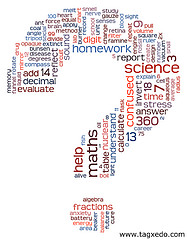 Teaching is my second career. I used to work for an environmental agency, but I’m having second thoughts about this switch. I took over for my cooperating teacher at the beginning of this marking period. I have a very diverse group of kids. Some are willing to cooperate, others very willing to test or disrespect me. I do not have a strong personality like my male co-op has. I’ve come to dread getting up and going into school. Is this typical during student teaching? I could use any input or advice you may have. –R. from California
Teaching is my second career. I used to work for an environmental agency, but I’m having second thoughts about this switch. I took over for my cooperating teacher at the beginning of this marking period. I have a very diverse group of kids. Some are willing to cooperate, others very willing to test or disrespect me. I do not have a strong personality like my male co-op has. I’ve come to dread getting up and going into school. Is this typical during student teaching? I could use any input or advice you may have. –R. from California
Dealing with challenging students is not the exclusive domain of student teachers! Even after more than 25 years, I had students who were cooperative and those who “tested” me. My biggest aha as a beginning teacher came when I realized not to take it personally when students acted out or were disrespectful. It was eye-opening when I saw them try the same behaviors with experienced teachers.
Without knowing your co-op and the students, it’s hard to say if they’re responding to you differently because of your gender. When you say you don’t have a strong personality, I suspect you mean that you’re not as loud or as physically imposing as your cooperating teacher. I’m female, short, and soft-spoken. At first, I had some students who only responded when I went on a wild-woman rampage (I think they found it very entertaining). So I had a talk with them about how I was taught to be polite to everyone and that was how I expected them to treat me and each other. It took a while for some students to adapt to that expectation. (At least you have the advantage of life experiences–I was 21 when I was student teaching and not much older than the students!)
You’re also the new kid on the block, and some students will want to find out which buttons to push. In my first year, I really struggled with one class in particular. I dreaded that class and was ready to quit in October! But my principal worked with me to develop some classroom management routines and procedures that set up expectations for student behavior and success.
The cardinal rule in classroom management is “the best defense is a good offense.”
Most students find science activities interesting, but many incidents happen during down times in the classroom–those few minutes at the beginning and end of the class and when transitioning between activities during class. Establishing routines for these times lets the students know what kinds of behaviors are expected and acceptable. These routines may take some time and modeling until they become automatic, but it’s worth it. (See the links below for specific ideas).
You’re taking over the class after students have had time with your co-op and his style and routines. Like many adults, students don’t always respond well to change (at least at first). The best advice I had from my student teaching supervisor was the “fair, firm, flexible, and friendly” mantra:
- Fair–Listen to students, treat students equitably, communicate your high expectations, provide the guidance and learning activities to meet them, and celebrate when they do.
- Firm–Some decisions are yours to make as the adult professional. Majority rule is not always appropriate for the classroom. Be honest with the students about your reasons. (e.g., I realize that goggles can be uncomfortable and look dorky. But I’m concerned about your safety and following the rules will help to keep you safe. I wear them myself.)
- Flexible–Be ready to change your mind if necessary or modify a routine that isn’t working. Don’t sweat the small stuff. Some issues are worth a followup but many are not. Snow days, pep rallies, fire drills–these all affect learning time, but we have to go with the flow as the saying goes.
- Friendly–Students don’t need an adult friend. They do need an adult with a sense of humor who will guide them, treat them with respect, model appropriate behavior, share her passion for science, and listen to them. Offering a friendly hello at the door, saying “please” and “thank you,” and making positive comments during class will pay off eventually. (Some veterans say that you shouldn’t smile for the first semester. I could never be that way.)
Teaching can be a rewarding career, so I hope you hang on. If you have specific issues, our colleagues on the NSTA e-mail lists and discussion forums are gold mines of suggestions and support.
Here are some suggestions on routines from previous blogs:
Photo: https://www.flickr.com/photos/mikecogh/3479000511/sizes/s/in/photostream/
Supporting children's interests
By Peggy Ashbrook
Posted on 2014-11-22
 As we take a nature walk on the paths through a large garden area tended by church members, the children always want to “go to the pond.” This body of water is an 8’ by 10’ pool with pump-circulated water flowing from a raised area. We watch the flow, bubbles and talk about the fine netting covering the entire water surface. I remind the children frequently to keep their feet on the grass as they creep closer to the rocks bordering the water. I’m sure they would wade in if it were their pond. I hope all of them get to wade in some body of flowing water with close adult supervision. I share their interest—in my childhood I had free access to “the creek” at the border of our property next to the airport. We waded, built dams with loose rocks and slid down the larger algae-covered rocks.
As we take a nature walk on the paths through a large garden area tended by church members, the children always want to “go to the pond.” This body of water is an 8’ by 10’ pool with pump-circulated water flowing from a raised area. We watch the flow, bubbles and talk about the fine netting covering the entire water surface. I remind the children frequently to keep their feet on the grass as they creep closer to the rocks bordering the water. I’m sure they would wade in if it were their pond. I hope all of them get to wade in some body of flowing water with close adult supervision. I share their interest—in my childhood I had free access to “the creek” at the border of our property next to the airport. We waded, built dams with loose rocks and slid down the larger algae-covered rocks.
The children speculate on the reasons for the netting over the water, describe it as looking like spider webs, talk about the leaves that have fallen onto the net, and reach towards it as they talk. On a day when we didn’t go outside I decided to follow up on this strong interest in the water and net, guided by the emphasis of emergent curriculum* on focusing on the diverse strengths of children, and building on their strengths and interests. I provided two small tubs of water, netting from bags of oranges and tree leaves from the garden. I was sure the children would be engaged with these materials for a long time, and was concerned that two tubs would not be enough.
 As a small group of children entered the room, I told them about the water and a painting exploration, also set up. They did go immediately to the water, and bunched up the nets, added leaves and swished their hands joyfully in the water. Over two days, there were 6 small groups—two each of 2’s, 3’s and 4’s—and each group of children repeated these actions. I asked the children if the set-up reminded them of the pond, wondering if they would begin to use the net as a leaf-catcher, and with another group I initiated a game of pretending to be a tree and dropping leaves on the net covering the water. A few children played for a few minutes but this model of the pond was obviously not engaging. And I was so proud of myself for following up on something that was so meaningful to the children! I was sure they would be interested in exploring ways to use the netting as a tool. Why do you think this small scale pond with netting did not engage them?
As a small group of children entered the room, I told them about the water and a painting exploration, also set up. They did go immediately to the water, and bunched up the nets, added leaves and swished their hands joyfully in the water. Over two days, there were 6 small groups—two each of 2’s, 3’s and 4’s—and each group of children repeated these actions. I asked the children if the set-up reminded them of the pond, wondering if they would begin to use the net as a leaf-catcher, and with another group I initiated a game of pretending to be a tree and dropping leaves on the net covering the water. A few children played for a few minutes but this model of the pond was obviously not engaging. And I was so proud of myself for following up on something that was so meaningful to the children! I was sure they would be interested in exploring ways to use the netting as a tool. Why do you think this small scale pond with netting did not engage them?
Many more children were interested in the painting exploration where they could paint on different surfaces—wax paper, felt, aluminum foil and pumpkins. I’ll follow up on this interest by providing larger pieces of the materials and setting out two kinds of paint, liquid watercolors and the thicker tempera paint.
*The goal of emergent curriculum is to respond to every child’s interests. Its practice is open-ended and self-directed. It depends on teacher initiative and intrinsic motivation, and it lends itself to a play-based environment. Emergent curriculum emerges from the children, but not only from the children. Curriculum emerges from the play of children and the play of teachers. It is coconstructed by the children and the adults and the environment itself. To develop curriculum in depth, adults must notice children’s questions and invent ways to extend them, document what happens, and invent more questions. The process is naturally individualized.
Elizabeth Jones. 2012. Our Proud Heritage: The Emergence of Emergent Curriculum. Young Children. 67(2): 66-68
Some additional resources for learning about emergent curriculum:
Jones, Elizabeth, & J. Nimmo. 1994. Emergent Curriculum. Washington, DC: NAEYC.
Stacey, S. 2009. Emergent Curriculum in Early Childhood Settings: From Theory to Practice. St. Paul, MN: Redleaf.
Queensland Curriculum and Assessment Authority. Queensland kindergarten learning guideline: Understanding emergent curriculum in practice. July 2014.
NSTA Has Made 25 Members Very Happy (and We Have Even More in Store)
By Teshia Birts, CAE
Posted on 2014-11-21
A big shout out and congratulations to 25 NSTA members who recently renewed their membership for two years and won FREE registration to the NSTA National Conference on Science Education in Chicago, March 12-15, 2015. The winners will also receive a $100 voucher for travel to the conference compliments of Southwest Airlines.
Over 280 NSTA members took advantage of the membership campaign, held earlier this month, and all were entered into a drawing for the free Chicago registration/travel voucher combination package. The winners were randomly selected and will be traveling to the Windy City next March for the largest conference ever of professionals dedicated to science teaching and learning.
Congratulations to:
James Bader – Lakewood, OH
Carol Baker – Oak Lawn, IL
Lisa Balazs – Hoover, AL
Teresa Bixby – Romeoville, IL
Susan Boxler – Oskaloosa, IA
Ernest DiMicco – Coventry, RI
Mary Fields – Coos Bay, OR
Scott Grumelot – Fayetteville, NC
Holly Heiple – Cleveland Heights, OH
Cynthia Holcomb – Cedar Park, TX
Karen Howell – Easton, CT
Sheryl Johnson – Oklahoma City, OK
Ute Kaden – Fairbanks, AK
Samantha Levine – Blauvelt, NY
Helen Patten – Sonoma, CA
Randi Peskin – Parkland, FL
Annie Prud’homme-Genereux – Squamish, BC
Christine Purkiss – San Angelo, TX
M. Quinones – Loveland, OH
Diane Simmons – Littleton, CO
Benjamin Spicer – Sewickley, PA
David Thomas – Ardmore, PA
Warren Wessel – Regina, SK
Lisa Woodruff – Hampton Falls, NH
Wynne Youngblood – Salisbury, NC
These members will continue to take advantage of outstanding NSTA member benefits – including an NSTA journal of choice, access to our listservs and substantial discounts to NSTA products and services – for two more years. For more information about NSTA’s member benefits, visit the NSTA Membership webpage.
Watch for more opportunities over the coming weeks and months to save money on NSTA membership and learn how membership can enhance your professional development. (And we can give you a hint about our next campaign which begins pretty soon – it’s after Black Friday, but before Giving Tuesday, when online shopping rules the day!)
A big shout out and congratulations to 25 NSTA members who recently renewed their membership for two years and won FREE registration to the NSTA National Conference on Science Education in Chicago, March 12-15, 2015. The winners will also receive a $100 voucher for travel to the conference compliments of Southwest Airlines.
NSTA journals: A goldmine for teachers
By Mary Bigelow
Posted on 2014-11-19
One of the perks of being an NSTA member is having access to all of the journals online. Regardless of the grade level you teach, the journals have ideas for authentic activities and investigations that can be used, adapted, or extended for different levels of student interest and experience. The articles in NSTA’s November K-12 journals focus on the crosscutting concept of Cause and Effect, Engineering Projects, and the practice of Analyzing and Interpreting Data.
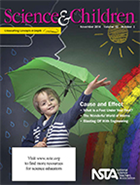 Science & Children: Cause and Effect
Science & Children: Cause and Effect
This issue continues a series that addresses each of the crosscutting concepts with “snapshots” of activities that include the concepts. Here are some SciLinks that provide additional content information and suggestions for additional activities and investigations related to this month’s articles:
- Teaching Through Trade Books–What Goes Up Must Come Down! [Gravity, Newton’s Laws]
- The Early Years—Cause and Effect: Where’s the Evidence? [Newton’s Laws]
- Formative Assessment Probes—Seeds in a Bag [Seed Germination]
- The Wonderful World of Worms [Worms]
- Real-World Units in the Conceptual Age [Forces and Motion, Force and Friction]
- What Is a Foot Under Your Feet? [Soil]
- STEM in a Hair Accessory [Cancer]
- Engineering Encounters—Blasting Off With Engineering [Rockets]
Note: Last month’s Science Scope also addressed Cause and Effect!
Science Scope: Engineering Solutions
This issue describes a number of STEM-based activities that will help turn students into the problem solvers of tomorrow. Two other organizations have excellent resources for engineering projects and lessons: TeachEngineering and TryEngineering. Both of these have ideas for lessons that focus on authentic problem-solving.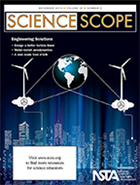
This month’s Teacher’s Toolkit article Exploring the science Framework and NGSS: Computational thinking in the science classroom is a must-read for all science teachers. It’s a good description of the similarities and differences between mathematical and computational thinking (hint: they’re not the same!).
Here are some SciLinks that provide additional content information and suggestions for additional activities and investigations related to this month’s featured articles:
- Engineering Design and Effects [Water Cycle, Solvation of Solids in Water, Water Quality, Watersheds and Pollution]
- Saving Pelicans (could be modified for any migratory bird) [Bird Adaptations, Migration of Birds, Biodiversity, Food Webs]
- Redesiging the Water Rocket [Rockets, Projectile Motion, Force and Motion]
- Designing Earthquake Resistant Structures [Earthquakes, Earthquakes and Society]
 The Science Teacher: Analyzing and Interpreting Data
The Science Teacher: Analyzing and Interpreting Data
As students become more adept at accessing, storing, and sharing data, they need to develop the skills and habits of mind necessary to analyze and interpret this data to produce useful information. The Next Generation Science Standards recognize Analyzing and Interpreting Data as one of the eight essential practices of science and engineering. This issue offers ideas for including this important practice in the classroom.
Here are some SciLinks that provide additional content information and suggestions for additional activities and investigations related to this month’s featured articles:
- In Praise of Messy Data [Life on Other Planets]
- The Graph Choice Chart [Graphing Data, Presenting Scientific Data]
- Reflecting on Data [Reflection, Mirrors]
- Demystifying Data [Climate Change, Measurements and Data]
- Thinking with Data [Statistics in Science]
One of the perks of being an NSTA member is having access to all of the journals online. Regardless of the grade level you teach, the journals have ideas for authentic activities and investigations that can be used, adapted, or extended for different levels of student interest and experience. The articles in NSTA’s November K-12 journals focus on the crosscutting concept of Cause and Effect, Engineering Projects, and the practice of Analyzing and Interpreting Data.
20 Essential NSTA Awards You Can Learn About in 15 Minutes
By Carole Hayward
Posted on 2014-11-19
 Being a member of NSTA immerses you in a community of educators interested in pushing themselves and their colleagues toward better science education. NSTA has 20 awards for educators and teachers who demonstrate their passion for science education every day.
Being a member of NSTA immerses you in a community of educators interested in pushing themselves and their colleagues toward better science education. NSTA has 20 awards for educators and teachers who demonstrate their passion for science education every day.
Recognition not only moves science education forward, but also brings affirmation to hard-working educators. NSTA will recognize hundreds of science teachers at the 2016 National Conference on Science Education in Nashville this March. You could be one of them.
In just 15 minutes, you can browse these awards to see which one is right for you—or for a teacher you know is going above and beyond. Most 2015 award deadlines are fast approaching, so here are some highlights:
Have you been an NSTA member for more than 10 years? This award recognizes NSTA members who have made extraordinary contributions to science education through personal commitment to education and significant contributions to the profession that reflect dedication to NSTA as well the entire educational community.
Deadline: November 30
Sponsored by Dow Chemical Company, the Robert H. Carleton Award is NSTA’s highest honor. The award recognizes one individual who has made outstanding contributions to, and provided leadership in, science education at the national level and to NSTA in particular.
Deadline: November 30
This award provides selected K–12 teachers (up to 25) in their first five years of teaching with funds to attend the annual NSTA National Conference on Science Education. Award recipients will be mentored, tracked, and provided with continuing opportunities for meaningful involvement with NSTA and its activities.
Deadline: November 30
This award recognizes six full-time K–12 teachers of science who successfully use innovation and excellence in their classroom.
Deadline: November 30
Are you passionate about science education? Do not miss your chance to share what you’ve done with NSTA and share your success with the wider science education community.
More Time?
If you haven’t already, make sure to keep the monthly NSTA Reports Grab Bag, which features Freebies for Science Teachers. Learn about national competitions and awards from across the nation and around the globe.
Not a member of NSTA? Learn more about how to join.
Laura Berry of Cogberry Creative is our guest blogger for this series. Laura is a communications professional for the education community.




